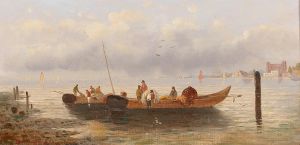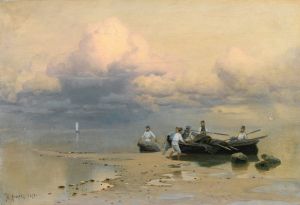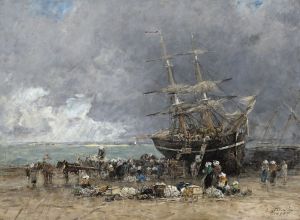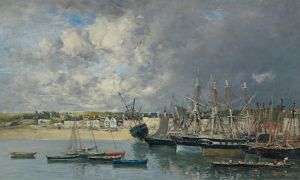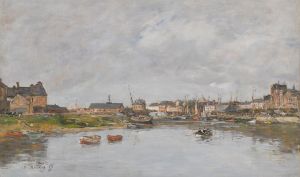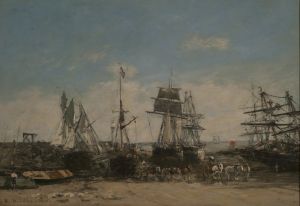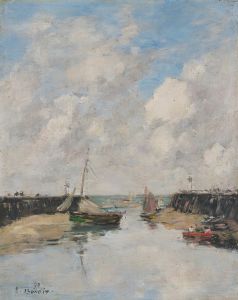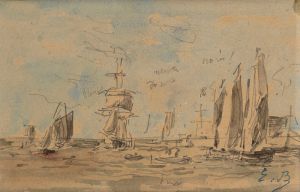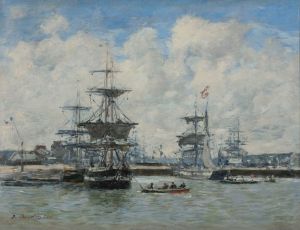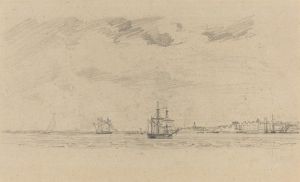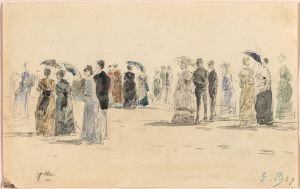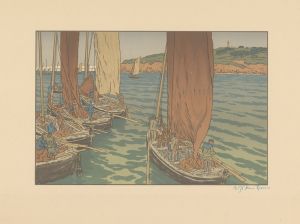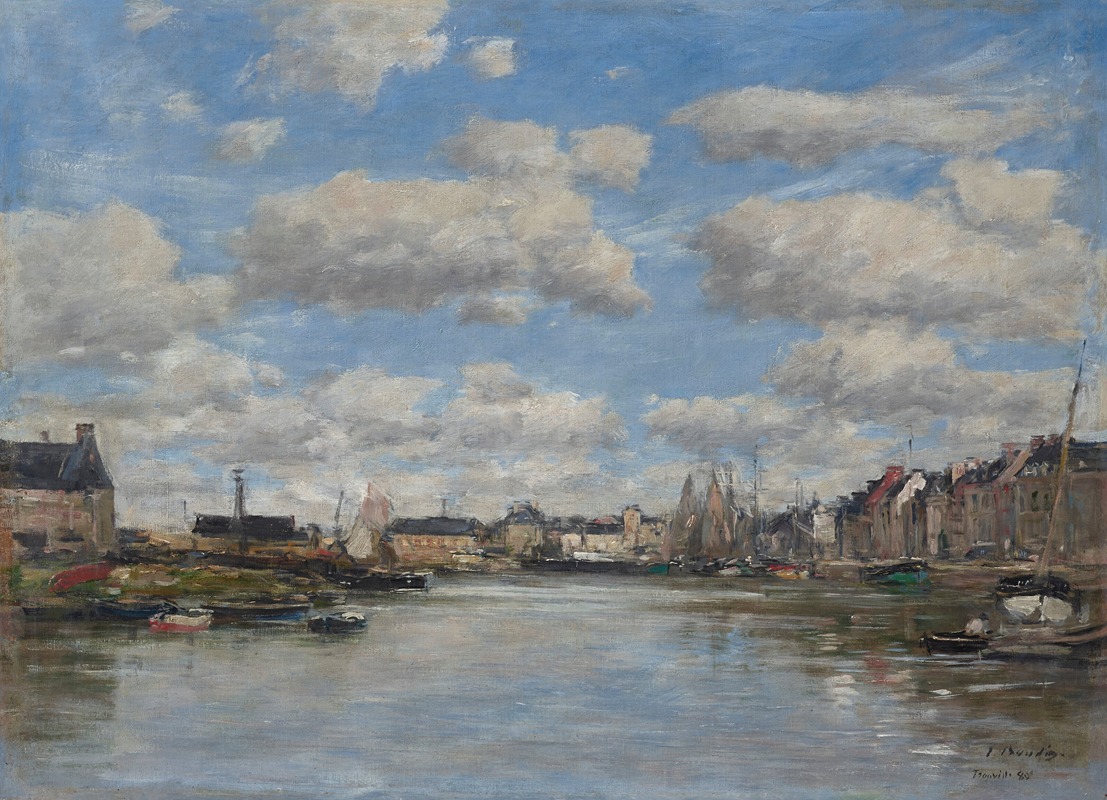
Trouville, Le Port
A hand-painted replica of Eugène Boudin’s masterpiece Trouville, Le Port, meticulously crafted by professional artists to capture the true essence of the original. Each piece is created with museum-quality canvas and rare mineral pigments, carefully painted by experienced artists with delicate brushstrokes and rich, layered colors to perfectly recreate the texture of the original artwork. Unlike machine-printed reproductions, this hand-painted version brings the painting to life, infused with the artist’s emotions and skill in every stroke. Whether for personal collection or home decoration, it instantly elevates the artistic atmosphere of any space.
Trouville, Le Port is an oil painting by the French artist Eugène Boudin, created in 1884. Boudin is renowned for his seascapes and beach scenes, and he is often regarded as one of the precursors to the Impressionist movement. His work is characterized by a keen observation of light and atmosphere, capturing the transient effects of weather and time of day.
The painting depicts the port of Trouville-sur-Mer, a coastal town in the Normandy region of France. Trouville was a popular destination for artists and tourists in the 19th century, known for its picturesque scenery and vibrant maritime activity. Boudin, who was born in Honfleur, a nearby town, frequently painted scenes of the Normandy coast, and Trouville was one of his favored subjects.
In Trouville, Le Port, Boudin captures the bustling life of the port with his typical attention to atmospheric conditions. The composition includes various elements typical of a working port, such as boats, docks, and figures engaged in maritime activities. The painting is notable for its loose brushwork and the way Boudin captures the effects of light on water and sky, a hallmark of his style. The sky is often a significant element in Boudin's paintings, and in this work, it plays a crucial role in conveying the mood and time of day.
Boudin's technique involves a delicate balance between detail and impression, allowing viewers to sense the liveliness of the port without being overwhelmed by minutiae. His use of color is subtle yet effective, with a palette that reflects the natural tones of the sea and sky. The reflections in the water and the play of light suggest a moment captured in time, a fleeting glimpse of everyday life in a coastal town.
Eugène Boudin's work, including Trouville, Le Port, had a significant influence on the Impressionists, particularly Claude Monet, who admired Boudin's ability to capture the essence of a scene with economy and precision. Boudin's emphasis on painting en plein air, or outdoors, to capture natural light and atmosphere, was a practice that became central to the Impressionist movement.
Trouville, Le Port is housed in the Musée d'Orsay in Paris, which holds an extensive collection of 19th-century art, including many works by Boudin. The painting is an excellent example of Boudin's contribution to the development of modern landscape painting and his role in the transition from traditional to Impressionist art.
Overall, Trouville, Le Port exemplifies Eugène Boudin's mastery in depicting the interplay of light, water, and human activity, offering a glimpse into the vibrant life of a 19th-century French port town. His work continues to be celebrated for its beauty, technical skill, and influence on subsequent generations of artists.





